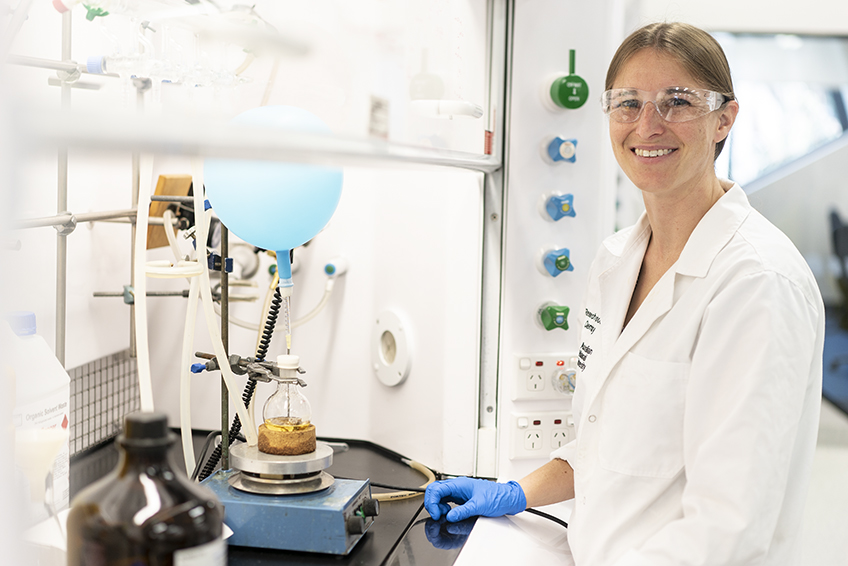‘Compounds ANU’ forges bonds between chemistry, biology and medical research
At the ANU Research School of Chemistry (RSC), Dr Lara Malins is making molecules.
Her lab investigates new ways of joining atoms together to build complex structures, so in the process, they end up making a lot of different compounds. These new, unique structures have great value to chemists, even if they don’t always know what their molecules can do.
Over at the ANU Research School of Biology (RSB), Professor Stefan Broer is testing molecules.
He’s looking for the right molecule—a hit—for a biological target he’s investigating, which could be developed into a drug for treating diabetes. He doesn’t know what molecule it will be, he just knows that to find it, he’s going to need to test a lot of different compounds.
These actions are repeated many times over across the University: many chemists making molecules, and many researchers, across RSB and the John Curtin School of Medical Research, testing them.
“We thought, well, there could be a really nice link here,” says Dr Malins. “If we had a collection of the molecules we make, our medical and biological researchers could test them against their targets. It could really break down barriers.”
That link has now been made, thanks to the creation of Compounds ANU (CANU), a library of compounds managed by RSC and made available to researchers using the ANU Centre for Therapeutic Discovery.
Compounds made by chemists at RSC have long been archived in freezers, but when the freezers fill up, compounds may simply be thrown away.
“Over the course of a PhD, a student might make 100 compounds,” Dr Malins says. “You make them, you get a paper published, and that’s great. But if you know that your compounds are now in this library and that one of them might come up as a hit—against melanoma, or malaria, or something else—I think that’s very rewarding as a chemist.”
“We can get more mileage out of our chemistry this way. We spend all this time making the compounds and would love to know if we’ve made something biologically active.”
Where hits are made in the screening process, then biological and medical researchers can “knock on the door” of the chemists at RSC to fast-track further work on the promising compound class.
Professor Broer says that in his search for molecules to block amino acid transporters as part of his diabetes research, he would usually turn to external commercial compound libraries.
“While the ANU compounds library is relatively small, it can be combined with other collections. The advantage is that if an ANU molecule comes up as a hit, we know our chemists have the willingness and interest to conduct the subsequent optimisation required.”
“It’s not something you can predict,” Dr Malins says, “but who knows? We might find something: the big eureka moment for medical or biological research.”
Find out more about Compounds ANU.




